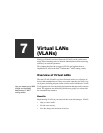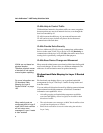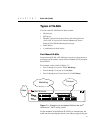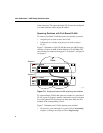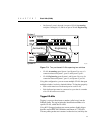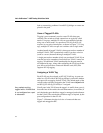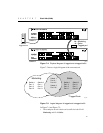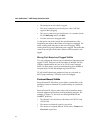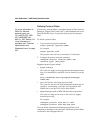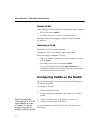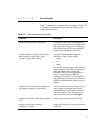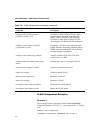
102
Intel
®
NetStructure™ 480T Routing Switch User Guide
• The trunk port on each switch is tagged.
• The server connected to port 9 on System 1 has a NIC that
supports 802.1Q tagging.
• The server connected to port 9 on System 1 is a member of both
VLAN
Marketing and VLAN Sales.
• All other stations use untagged traffic.
As data passes out of the switch, the switch determines if the
destination port requires the frames to be tagged or untagged. All
traffic coming from and going to the server is tagged. Traffic
coming from and going to the trunk ports is tagged. The traffic that
comes from and goes to the other stations on this network is not
tagged.
Mixing Port-Based and Tagged VLANs
You can configure the switch using a combination of port-based and
tagged VLANs. Each port can be a member of multiple VLANs,
with the stipulation that only one of its VLANs uses untagged
traffic. In other words, a port can simultaneously be a member of
one port-based VLAN and multiple tag-based VLANs.
VLAN classification treats packets arriving on a port with an
802.1Q tag containing a VLANid of zero as untagged.
Protocol-Based VLANs
Protocol-based VLANs allow you to define a packet filter as the
matching criteria to determine if a packet belongs to a particular
VLAN.
Protocol-based VLANs are most often used in situations where
network segments include hosts running multiple protocols. For
example, in Figure 7.6, the hosts are running both the IP and
NetBIOS
§
protocols:
• The IP traffic is divided into two IP subnets, 192.207.35.0 and
192.207.36.0.
• The subnets are internally routed by the switch.
• The subnets are assigned different VLAN names,
Finance and
Personnel, respectively.




